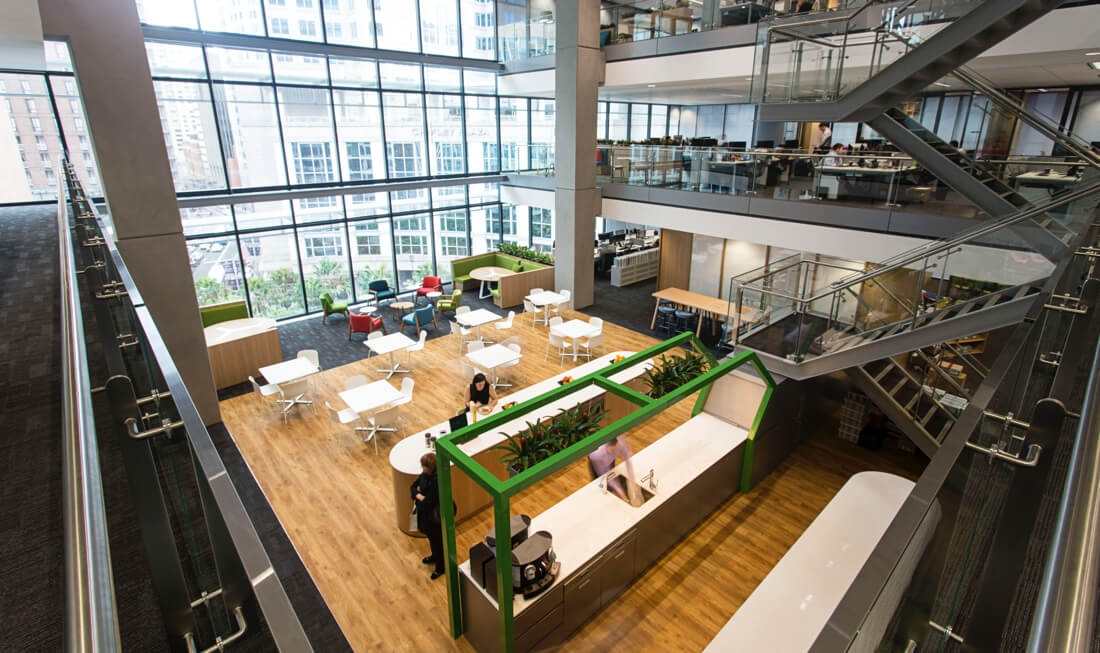
We’ve all seen the images. Happy young employees, working productively in open-air workspaces, easily collaborating with co-workers and outside colleagues all-over the world, utilizing persistent chat tools like Slack to keep on top of all their latest projects and other efforts. It sounds great, and in a few places in Silicon Valley, things do work that way—at least in theory.
But at most companies in the US (and likely the rest of the world), well, not so much. It’s not that companies aren’t looking at or starting to use some of these new communication and collaboration technologies. Some are, but the deployment levels are low at less than 30% overall; plus, employee habits haven’t really changed in many places.
Such are the results from the latest study on workplace trends completed by TECHnalysis Research. The study is based on a survey of 1,001 US-based working adults aged 18-74 at medium (100-999 employees) and large (1,000+ employees) companies across a range of industries. The survey goal was to understand how the modern workplace is evolving in terms of how and where people work, as well as the hardware, software, services and capabilities that employees expect from their employers.
I wrote about some of the surprising results regarding work habits and locations in a previous column called “The Workplace of the Future” but for this column I’m going to focus on some of the big picture implications of the research, as well as some technology-specific trends.
The key takeaway is that both technologies and habits rooted in the 20th century are keeping the 21st century vision of the modern workplace from becoming reality. For example, despite the appearance of modern communications and collaboration tools, it’s the “old school” methods of emails, phone calls and texts that make up 75% of all communications with co-workers. There are certainly some differences based on the age of the employee, but even for workers under 45, the number is 71% (emails and voice calls make up 58% for that age group).
From a device perspective, the most common tool by far is not a smartphone, but a company-owned desktop PC, which is used for just under half (48%) of all device-related work. (For the record, personally owned smartphones are only used for 7.5% of total work on average.) Partially as a result, some version of Windows is used for rougly 2/3 (65%) of all work, with Android at 11%, iOS at 10%, and the rest split among cloud-based platforms, Macs, Linux and other alternative options. Arguably, that is a drop from the days when Windows owned 90%+, but it still shows how dominant Microsoft is in the workplace.
Open air environments have received a great deal of attention and focus in modern workplaces, but there’s a potential gremlin in that future work vision: noise. In fact, in about 25% of outside the office alternative or shared workspaces (such as WeWork) and in 20% of inside the office alternative or shared workspaces, noise was cited as having a serious impact on productivity. Given these numbers, it’s not terribly surprising to see reports suggesting that some of these experiments in workplace flexibility are not working out as well as hoped.
From a conference room perspective, basic audioconferencing, guest WiFi, and wireless access to projectors (or other displays) are the most widely available services, but when asked which of these capabilities offers the greatest quality and utility, the story was very different. Modern tools such as HD videoconferencing, large interactive screens (a la Microsoft’s Surface Hub), electronic whiteboards, and dedicated computing devices designed to ease meeting collaboration(such as HP’s new Elite Slice, based on Intel’s Unite platform), scored the highest satisfaction levels, despite their currently low levels of usage. In other words, companies who invest in modern collaboration tools are likely to find higher usage and appreciation for those devices.
Companies who invest in modern collaboration tools are likely to find higher usage and appreciation for those devices.
From a software perspective, it seems that old habits die hard. Emailing documents back and forth is still the most common methold of collaboration with co-workers at 35%, while the usage of cloud-based storage services is only 8% with co-workers and 7% with colleagues from other organizations. Similarly, real-time document collaboration tools, such as Microsoft’s Office 365 and Google Docs, which have now been available for several years, are only used with co-workers for collaboration purposes by 19% of respondents.
Modern forms of security, such as biometrics, are another key part of the ideal future workplace vision. In current-day reality, though, biometric security methods are only used 15% of the time for corporate data, 14% for physical facilities, and 12% for access to either corporate-owned or personally owned devices. Surprisingly, 41% of respondents said their company does not have any security policy for personal owned devices—yet those personal devices are used to complete 25% of the device-based work that they do. No wonder security issues at many organizations are a serious concern.
The tools and technologies are already available to deliver on a highly optimized, highly productive workplace of the future, but, as the survey results show, there’s still a long way to go before that vision becomes reality.
If you’d like to dig a bit deeper, a free copy of a few survey highlights is available to download in PDF format here. Bob O’Donnell is the founder and chief analyst of TECHnalysis Research, LLC a technology consulting and market research firm. You can follow him on Twitter @bobodtech. This article was originally published on Tech.pinions.
https://www.techspot.com/news/68154-modern-workplaces-more-vision-than-reality.html